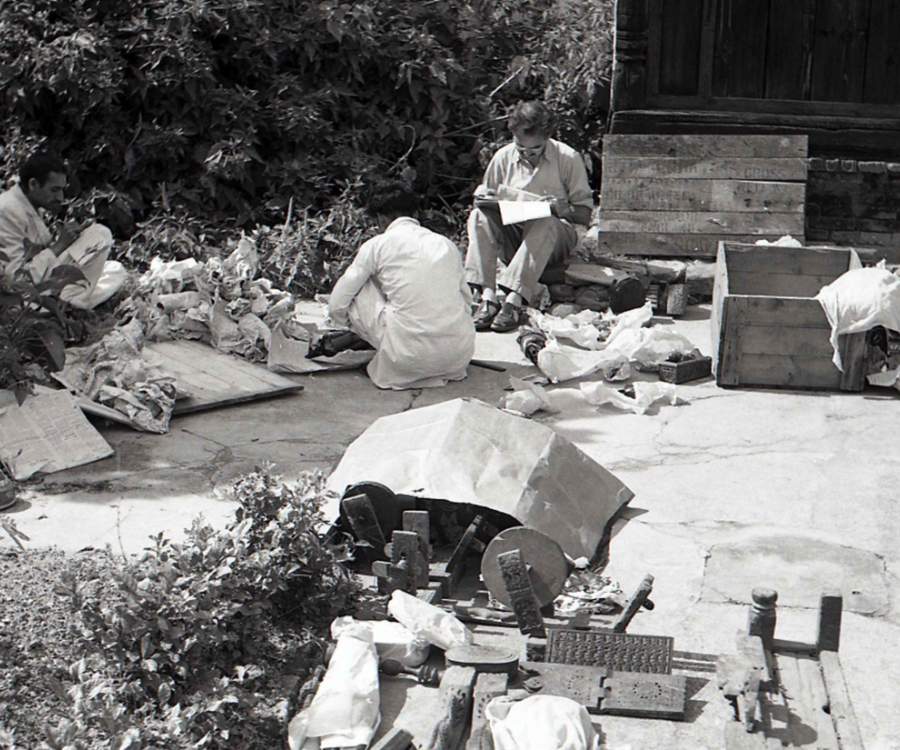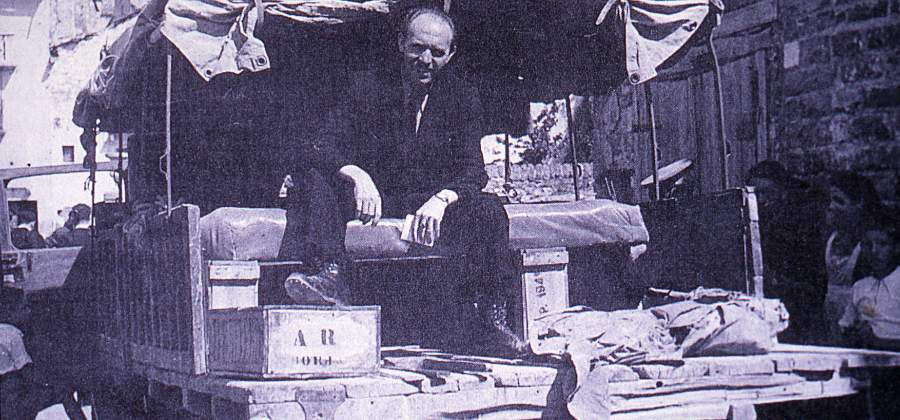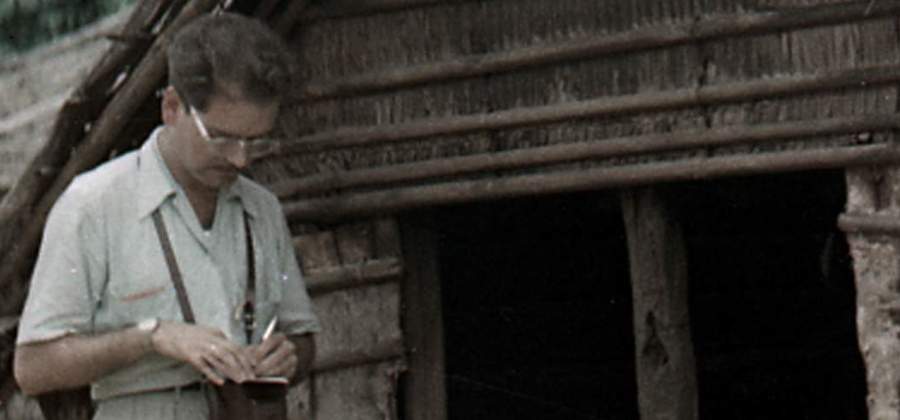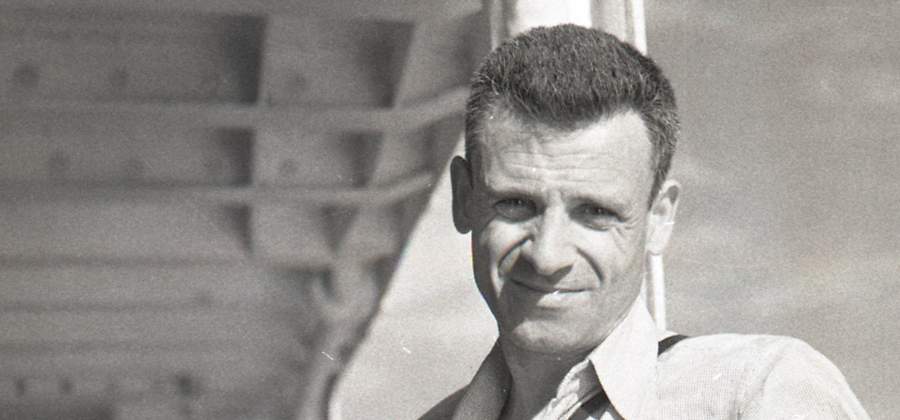Protagonists
The main origin of the collections are the ethno-anthropological campaigns and expeditions carried out until the 1960s, by both museum personnel and other individuals linked to the institution, such as the sculptor Eudald Serra and the collector Albert Folch.
Ramon Violant i Simorra
(Sarroca de Bellera, 1903 – Barcelona, 1956)
Ethnographer and museographer. Born into a humble Pyrenean family, he was the oldest of five children. He was a tailor by trade and it was his family and his self-teaching that got him interested in folklore and ethnology, independently from schools and, above all, dogmas.
Further information
Joan Amades i Gelats
(Barcelona, 1889 – Barcelona, 1959)
A well-known, renowned self-taught folklorist, he was a leading Catalan and international ethnologist. He explored many different areas, from festival imagery to oral tradition, including dances, rituals, cordel literature, clothing, trades, etc.
Further informationAlbert Folch Rusiñol
(Barcelona, 1922 – Barcelona, 1988)
Was a chemist and businessman. He took a liking to ethnology while he was doing his military service in the Canary Islands, as he often travelled to Africa in order to carry out cooperation work in a drinking-water plant in the Sahara. He inherited his taste and passion for collecting from his father, Joaquim Folch i Girona, an eminent mineralogy collector.
Further informationAugust Panyella i Gómez
(Barcelona, 1921 – Barcelona, 1999)
A historian and ethnologist, was the first director and promoter of the Museu Etnològic de Barcelona. He had a scholarship with the Museu Arqueològic de Barcelona, he collaborated with the Rodrigo Caro Archaeological Institute at the CSIC and he was assistant to the Sociology Chair at the University of Barcelona, directed by Dr. Carreras i Artau. In 1948, he took part in the Institute of African Studies’ expedition to Equatorial Guinea, led by Dr. Santiago Alcobé.
Further informationEudald Serra i Güell
(Barcelona, 1911 – Barcelona, 2002)
Sculptor and ethnologist. A renowned surrealist sculptor, he was part of the pre-war Catalan artistic avant-garde, with the ADLAN group (Friends of Art Nouveau). He studied at the Escola d’Arts i Oficis Llotja, where he was a student of Ángel Ferrant. In 1935, he went to Japan, where he became involved in ceramics, through Hamada Shoji, and he staged a number of exhibitions which won various awards.
Further informationCollaborators
(More protagonists)
Other well-known people had a hand in the origin of our collections, as they took part in the ethno-anthropological campaigns and expeditions carried out until the 1960s, as well as undertaking documentary and conservation work in the museum itself.
Further information
Origin of the collections
The Museu Etnològic i de Cultures del Món's collections are made up of a wide range of origins, materials and uses.
Find out about the originsThe campaigns and journeys
Since the creation of the original museums that eventually became the Museu Etnològic i de Cultures del Món, there have been various collection campaigns and expeditions.
Find out about the campaigns and journeys










